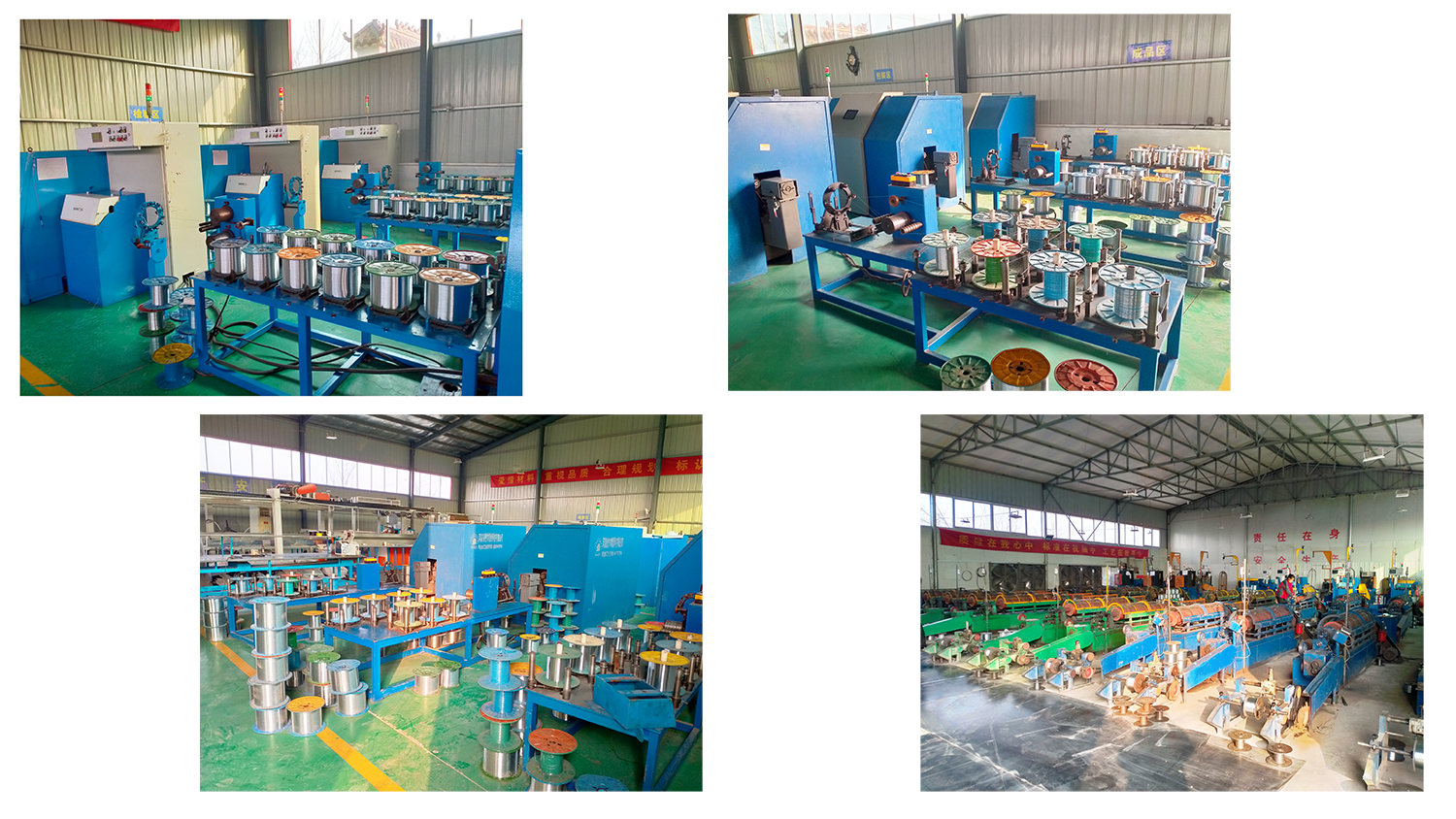The production of steel wire rope has three basic processes: wire drawing, stranding and rope bonding.
1. Wire drawing
Raw material: The wire rope drawing mentioned here refers to a process in which the raw material is pickled, phosphated, shelled, and cracked, during which it is pulled one or more times to change its molecular structure to achieve the target diameter. The raw materials are ferrous metals with a diameter of 0.14~10.00mm and non-ferrous metals with a diameter of 0.01~16.00mm.
Cold drawn wire: Ordinary round steel, let it pass through a hole with a smaller diameter, then the diameter of the round steel will become smaller and the length will be elongated. Repeat this process, the round steel will be Further become smaller. After this plastic deformation, the hardness of the steel will increase, and the plasticity will basically disappear. Where plasticity is not required, but strength is only required, such steel can be used.
Tempering: Because the molecular structure of the steel wire has been destroyed, only tempering restores the internal structure of the steel wire. In order to draw the wire again, so that it is not easy to break, and can be pulled to the strength we want. Strength is what we call tensile strength. The strength is drawn by wire drawing, not by heat treatment. This is the biggest difference between wire rope technology and mechanical processing technology. General strength: 1470N/mm2, 1570N/mm2, 1670N/mm2, 1770N/mm2, 1870N/mm2, 1960N/mm2. The higher the strength, the stronger the tensile force, but the worse the toughness. Therefore, the appropriate strength should be selected in the selection of the wire rope. Can not blindly high intensity. High-strength steel wire rope has strong pulling force, but weaker in terms of wear resistance and flexibility.
2. Twisted strands
Type, structure and application of twisted strands The type, structure, raw material and production process of steel wire rope depend on the application. Generally, carbon steel wire with a diameter of 0.1~6.0mm and a circular section is used for steel wire rope. When twisting sealed and semi-sealed steel wire ropes, use Z-shaped and other special-shaped steel wires. In order to ensure the safety and reliability of the wire rope, it is required that the wire rope has sufficient strength, good flexibility, tightness of twisting, compression resistance, wear resistance, corrosion resistance and fatigue strength, among which strength is the most important .
Plating layer: galvanized, aluminum-plated, nylon or plastic coated, etc. Galvanizing is divided into thin coatings of steel wire first and then drawn and thick coatings of galvanized steel after drawing. The mechanical properties of thick coatings are lower than that of smooth steel wire ropes, and they are suitable for use in severely corrosive environments. Aluminum-plated steel wire rope is more corrosion-resistant, wear-resistant and heat-resistant than galvanized steel wire rope. It is mainly used in fishing trawlers and mines containing H2S. It is produced by the method of first plating and then drawing. The steel wire rope coated with nylon or plastic is divided into two types: coated rope and coated stranded rope. The former is used for static cables, and the latter is used for moving cables.
3. Close the rope
The process of arranging the rope strands around the center line of the rope core to produce a steel wire rope on the rope closing machine. The rope bonding shall be carried out strictly in accordance with the steel wire rope manufacturing process regulations. After the rope closing machine is selected, the strands used for the rope should be carefully selected. The specification, structure, twist direction (see wire rope twisting method), and length of the strands should meet the requirements of the steel wire rope manufacturing card. After the strands are selected, install the stranded spool on the spool frame of the rope closing machine. The installation of the spool, the threading method of the strands, the adjustment of the twisting parameters and the twisting operation in the rope closing process are the same as those during the twisting of the strands.
Post time: Dec-17-2021





